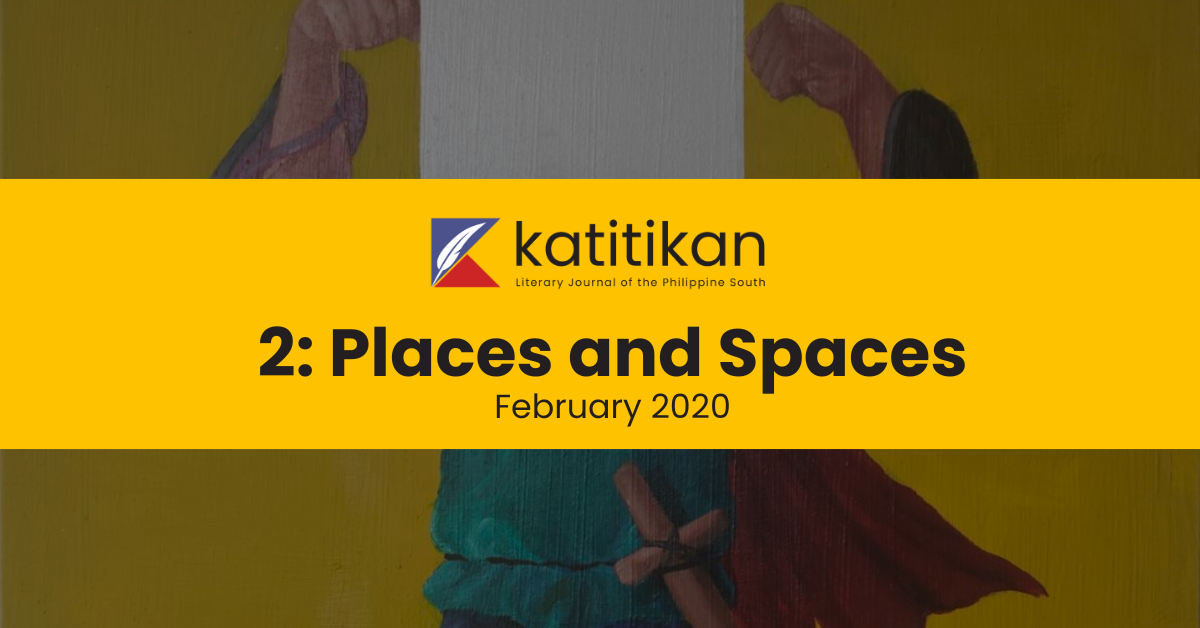February 2020
-

Katitikan Issue 2: Places and Spaces
The second issue of Katitikan explores “Places and Spaces,” delving into how memory, identity, and language shape our sense of belonging and meaning in the world.
-
Looking at Space and Place: The Navigation of Meaning Making
During the 1st Cebu Writers Workshop held in Oslob from the days of Feb 7 to 9, there arose during the sessions a constant need to talk about place-making. Here Place-making was dominantly figured through two other relevant concepts – that of space and that of meaning making. Fellows and panelists alike talked about their…
-
Choosing to Stay Home
“Diri lang ta,” Nanay Salbing says, as she leads us through the maze that is Barangay Pasil. An hour ago, I was sitting in a cubicle in our office on the sixth floor of a building inside IT Park. The office only seems to have two colors: blue and white. In the office, there are…
-
Baybayin All Over Her Face
Her eyes spill out unspoken stories—in the form of wrinkles that etch deeper and longer with the passage of time. From the corners of her eyes, they branch out like patterns on the wings of a butterfly—crawling all over her face, etching curves on her cheeks or fashioning waves on her forehead. These scratches of…
-
My Trilingual Career
Francis C. Macansantos – Butch to his friends and family – considered many places home. Born in Cotabato City in 1949, he spent his boyhood in Zamboanga City, hometown of his parents. A Zamboangueno at heart (and palate), his memories of growing up with boyhood friends in Zamboanga were vivid and came to life in…
